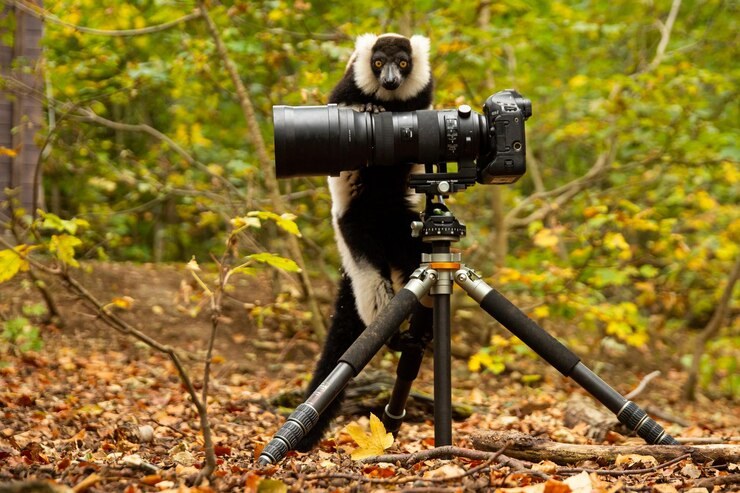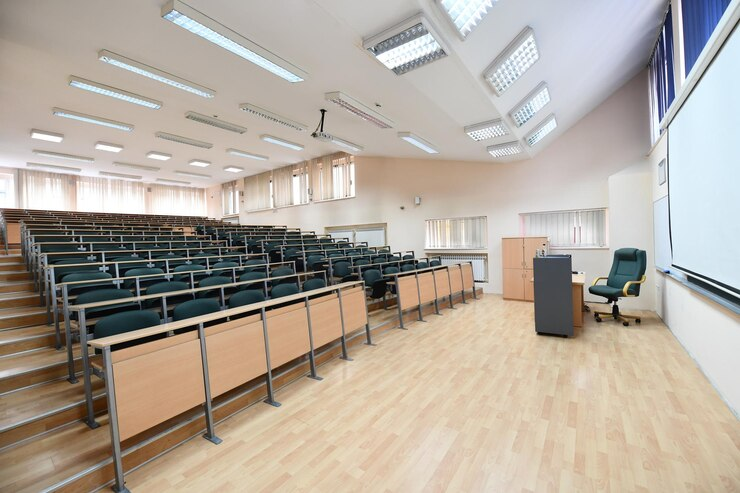High-quality audio is essential for engaging video content, yet built-in camera mics often fall short in clarity and focus. This guide defines external camera microphones and examines their core features. It contrasts on-camera solutions with multi-device setups, highlighting trade-offs in cost, ergonomics, and power requirements. A detailed how-to section covers gear selection, shock mounting, wind protection, and manual audio level configuration for optimal signal-to-noise ratio. Scenario-based recommendations address vlogging, documentary interviews, live event coverage, and nature recording, emphasizing real-time monitoring and cable management best practices. The guide concludes with professional tips and a concise FAQ addressing phantom power, wireless interference, and proximity effects. By following these insights, content creators can achieve broadcast-quality sound directly from their camera rigs, minimizing post-production sync challenges and maximizing audience immersion.
Advancements in audio technology are driving the microphone market, increasing the adoption of smart devices, and rising demand for high-quality audio in diverse applications. Camera microphone can improve your recording with better sound. In this guide, I’ll walk you through everything you need to know about camera mics in 2025, from definitions and techniques to step-by-step setups, pro tips, and FAQs.
Camera Mic Overview: Definition, Types, Features & Scenarios
What Is a Camera Mic?
I like to think of a camera mic as the unsung hero of any video setup. Unlike built-in camera microphones that pick up everything around you—room echo, wind noise, distant traffic—an external camera mic focuses on your subject’s voice and minimizes unwanted ambient sounds. Whether it’s a shotgun microphone, a lavalier mic, or a handheld radio mic, these tools shape the audio narrative just like a prime lens shapes the visual one.
Types of Camera Microphones
- Shotgun Microphones: Perfect for run-and-gun shooting; they attach on top of your camera or boom pole to capture focused audio.
- Lavalier (Lapel) Mics: Tiny mics clipped to clothing; they offer consistent levels and freedom from camera-mounted positions.
- Wireless Systems: Transmit audio over radio to a receiver on your camera; great for interviews and event coverage.
- Stereo Mics: Capture left and right channels for ambience, music sessions, or VR applications.
Check out my in-depth review of top shotgun microphones of 2025.
Advantages of Camera-Mounted Microphones
- Significantly Improved Audio Quality External camera mics deliver much clearer, more detailed sound than internal microphones, which are typically designed for general-purpose pickup and emphasize broad frequency response over clarity.
- Directional Pickup and Noise Reduction Many on-camera mics (shotgun or hypercardioid) focus on the subject directly in front of the lens, suppressing off-axis noise—ideal for vlogging in busy environments.
- Reduced Autofocus and Handling Noise By isolating audio capture from the camera’s body, you avoid mechanical “pings” from autofocus motors and camera button presses.
- Flexible Mounting Options You can hot-shoe mount a small shotgun mic, attach a lavalier wireless receiver, or use a boompole adapter—giving you creative freedom across run-and-gun shoots, interviews, and studio setups.
- Built-In Wind Protection and Shock Mounting Most camera mics include foam windshields or furry “dead cats” and integrated shock mounts to combat wind noise and camera vibrations without additional rigs.
- Consistent Audio-Video Synchronization Since the mic plugs directly into the camera’s audio input, you avoid multi-device sync issues in post, streamlining your editing workflow.
- Real-Time Monitoring and Two-Way Audio (Security Use) On security and livestream cameras, built-in mics with two-way talkback let you monitor and interact instantly, enhancing situational awareness.
- Compact, Plug-and-Play Convenience Camera-mounted mics typically draw power from the camera or small internal batteries, eliminating the need for extra recorders and cumbersome cabling.
Disadvantages of Camera-Mounted Microphones
- Additional Cost and Gear Complexity Purchasing a quality on-camera mic adds expense, and requires carrying, mounting, and powering another piece of kit.
- Added Bulk and Weight Mounting a shotgun or wireless receiver on top of your camera can affect balance and ergonomics, especially for handheld or gimbal work.
- Battery/Power Limitations Many camera mics rely on camera plug-in power (phantom or plug-in power) or small AA/AAA batteries, risking mid-shoot shutdowns if not monitored.
- Limited Isolation in Omnidirectional Models Built-in omni capsule camera mics pick up ambient and reverberant noise, making them less ideal for noisy or echo-prone spaces.
- Potential for Cable Clutter Running XLR or 3.5 mm cables from the mic to the camera can lead to messy setups and snag hazards on dynamic shoots.
- Susceptible to Wireless Interference Wireless lavaliers or integrated RF receivers can suffer dropouts or interference from competing signals in crowded RF environments.
- Mic Placement Constraints Because the mic rides on the camera, its audio perspective is fixed with the lens—suboptimal for off-axis dialogue or multi-speaker setups without repositioning the entire rig.
Scenarios for Camera Microphones
- Vlogging and Content Creation
When you’re talking directly to your audience—whether on YouTube, TikTok, or Instagram Reels—a compact shotgun mic or lavalier clipped to your shirt gives you clear, focused audio without the camera’s autofocus whir or handling noise.
- Interviews and Documentary Filming
One-on-one interviews demand natural voice reproduction. An on-camera shotgun mic (e.g., Rode VideoMic Pro) or a lav mic hidden in clothing captures nuanced speech and room tone, ensuring your subjects sound engaging and present.
- Run-and-Gun Shoots
For ENG, news gathering, or fast-paced documentaries, you need minimal setup. A lightweight shotgun mic on a boompole or hot-shoe mount helps you move quickly and keep dialogue intelligible—even when you only have seconds to get the shot.
- Podcasting & Streaming On-Camera
When your face—and your mic—share the frame, consider a low-profile shotgun on a compact stand or boom arm just out of view. This setup delivers broadcast-quality audio for livestreams, tabletop podcasts, and gaming streams, without a bulky mic in the shot.
- Event Coverage (Weddings, Conferences)
During ceremonies or corporate events, you’re usually several feet from your subjects. A directional shotgun mic nailed to the camera’s cold shoe helps isolate vows or speeches from ambient crowd noise, keeping every word intelligible in post. Apart from the Camera Mic, Nearity A20S is tailored to the needs of crystal sound in any sized conferences because it is equipped with daisy-chained connectivity and AI 1.0 noise, echo, and reverberation cancellation. With this flexibility and AI-based voice optimization technology, you can seamlessly adapt to various room sizes, from medium to large meetings, enhancing collaboration efficiency and get a high-quality audio performance, making remote meetings feel like face-to-face conversations.

- Wildlife & Nature Recording
Capturing birdsong, rustling leaves, or distant animal calls calls for omnidirectional or parabolic mics mounted on your camera or a portable recorder. These pick up detailed soundscapes and specific wildlife calls, even dozens of meters away, for immersive nature films.

- Corporate Training & Educational Videos
For sit-down tutorials, demos, or e-learning shoots, camera mics with built-in AI noise suppression reduce HVAC hum and keyboard clicks. A plug-and-play shotgun mic ensures instructors’ voices stay front-and-center—even in echo-ey conference rooms. Besides, if you want a better sound, Nearity A22S is quite a valuable investment. Compared to Camera Mics, A22S is easier and more flexible to set up with bluetooth supported and it captures sound from all directions. Specifically, it is powered by AI to reduce more than 300 common background noises and packs 8 Microphones arranged in a 360° array pick up voices from all directions. It also offers the daisy chain capability fits spaces of all sizes.

How to Connect Camera Shotgun Mic?
Step 1: Gather Your Gear
- Shotgun Mic Body: e.g., Rode VideoMic NTG or Sennheiser MKE 600.
- Shock Mount: Reduces handling noise.
- Foam Windscreen or Deadcat: Blocks wind noise during outdoor shoots.
- Cables and Adapters: Most cams use a 3.5mm jack; pro mics use XLR—grab an XLR to 3.5mm adapter or an audio interface.
Step 2: Mounting Techniques
- Hot Shoe Mount: Slide your shock mount onto the camera’s hot shoe.
- Cold Shoe + Shock Mount: If your camera has no powered hot shoe, use a cold shoe and an external battery for your mic.
- Mounting on Boom Pole: For interviews, boom the shotgun overhead. Use a boom shock mount to isolate vibrations.
Step 3: Connecting Audio Lines
- Plug the XLR cable from mic to adapter, then into your camera’s mic input.
- If you have two inputs, record a backup track on channel 2.
Step 4: Camera Settings
- Manual Audio Levels: Aim for -12 to -6 dB peaks.
- Disable AGC: Automatic Gain Control can cause pumping in your audio.
- Monitor with Headphones: Always plug in headphones to catch issues in real time.
Tips on Elevating Your Microphone for Camera Sound
Use Wind Protection
Outdoor shoots? A foam windscreen might not cut it in gusts. Attach a furry deadcat to tame wind noise.
Positioning Matters
- Close Mic Placement: Keeps voice present; beware proximity boost in low frequencies.
- Angle for Off-Axis Rejection: Aim off-axis to reduce unwanted sounds behind you.
Leverage Audio Mixers
For multi-speaker setups, a small mixer with EQ lets you balance levels on the fly. Plus, you can record separate tracks for cleaner editing.
Cable Management
- Use Short Cables on camera to reduce tangling.
- Lock Connectors: Prevent accidental pops or dropouts.
Maintenance and Storage
- Replace Worn Foam: Old windscreens crumble and degrade sound.
- Check Batteries: Phantom power drains quickly—carry spares.
Conclusion
You made it! By now, you should feel confident distinguishing between on-camera mics, setting up shotgun rigs, and dialing in pristine audio levels. A camera mount mic is simply any mic fixed to your camera—shotguns, stereo pair mounts, even tiny boundary mics—designed to capture clear, focused sound right where the action happens.
Remember, great audio starts with choosing the right mic, positioning it mindfully, and tweaking settings to suit your environment. No more muffled dialogue, unwanted hisses, or re-recorded ADR. Your viewers will thank you.
FAQs
Q: What’s the difference between a shotgun mic and a lavalier mic? A: Shotguns are directional and mount on-camera or boom; they excel at focused capture. Lavalier mics clip to clothing for consistent levels and hands-free operation.
Q: Can I use a smartphone mic attachment instead of a pro camera mic? A: Smartphone mics can work in a pinch, but they usually lack low self-noise and robust mounts. For professional quality, stick to purpose-built camera mics.
Q: How do I avoid audio clipping in loud environments? A: Lower your preamp gain, use a pad switch if available, and position the mic further from the source.
Q: Do I need phantom power for my camera microphone? A: Condenser mics often require phantom power (48V). Check your mic’s specs; camera hot shoes sometimes provide it, or use an external battery pack.
Q: Is a wireless mic system worth the cost? A: If you need mobility and clean audio without cable runs, yes. Wireless systems add complexity but free you from tethered setups.










